I have a buck converter (Half bridge) as shown in the schematic below. (48V output). V_D goes to an external inductor.

I have measured the inductor current for different loads (Nominal(upto 4A), Overcurrent(5 to 8A) and short circuit case(above 8A). For the Nominal case, the inductor current waveform has triangular waveform as expected.
For overcurrent and short circuit case, I get non-triangular waveform as seen in figure.
 The period is 3 times and there is non-linear slope.
The current waveform when I load the output from no load to overcurrent is shown in figure.
The period is 3 times and there is non-linear slope.
The current waveform when I load the output from no load to overcurrent is shown in figure. 
Why do I get this incorrect waveform?
Note: When I increase the gate driver supply voltage from 12 to 14V, I see correct triangular wave for the overcurrent case. But I cannot change the voltage to 14V in the final circuit because of technical reasons. I tried reducing the high side turn on gate resistance to 15 ohms, but I still get non-triangular inductor current waveform
I want a solution that does not involve voltage change.
Summary
- I see non-triangular inductor current when the load at output of the buck converter is high (Overcurrent/short circuit current)
- When I increase the gate resistance the problem is solved upto certain extent (for overcurrent case). The problem still persists for the short circuit case.
- When I increase the gate supply voltage to 14V the problem is solved even for short circuit case.
- Instead of increasing the gate supplied voltage, I increased the bootstrap capacitance. There was no change in the waveform received.
- The problem seems to be temperature dependent. When the temperature increases the problem of non-triangular waveform occurs even for lower loads like 8 ohms (Still in over-current case)
In conclusion I want answers to
- Why do I get non-triangular waveform and how do I fix it without changing the gate driver supply voltage?
- What can be changed in the gate driver circuit?